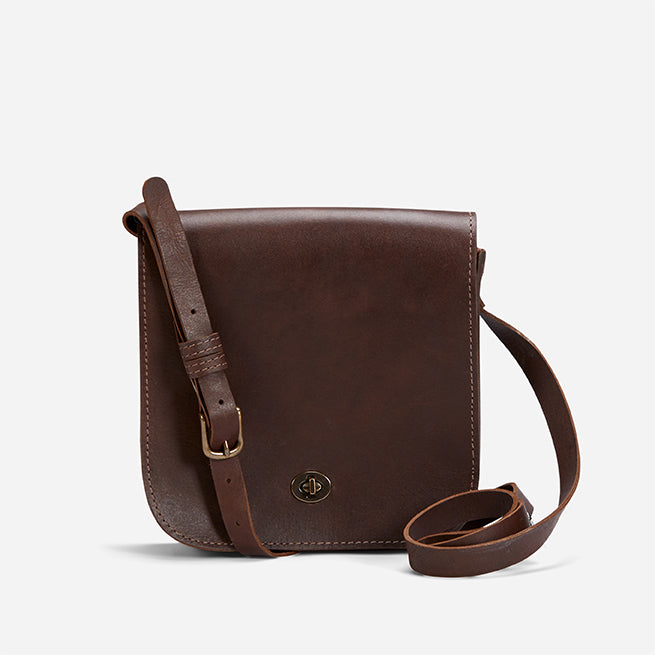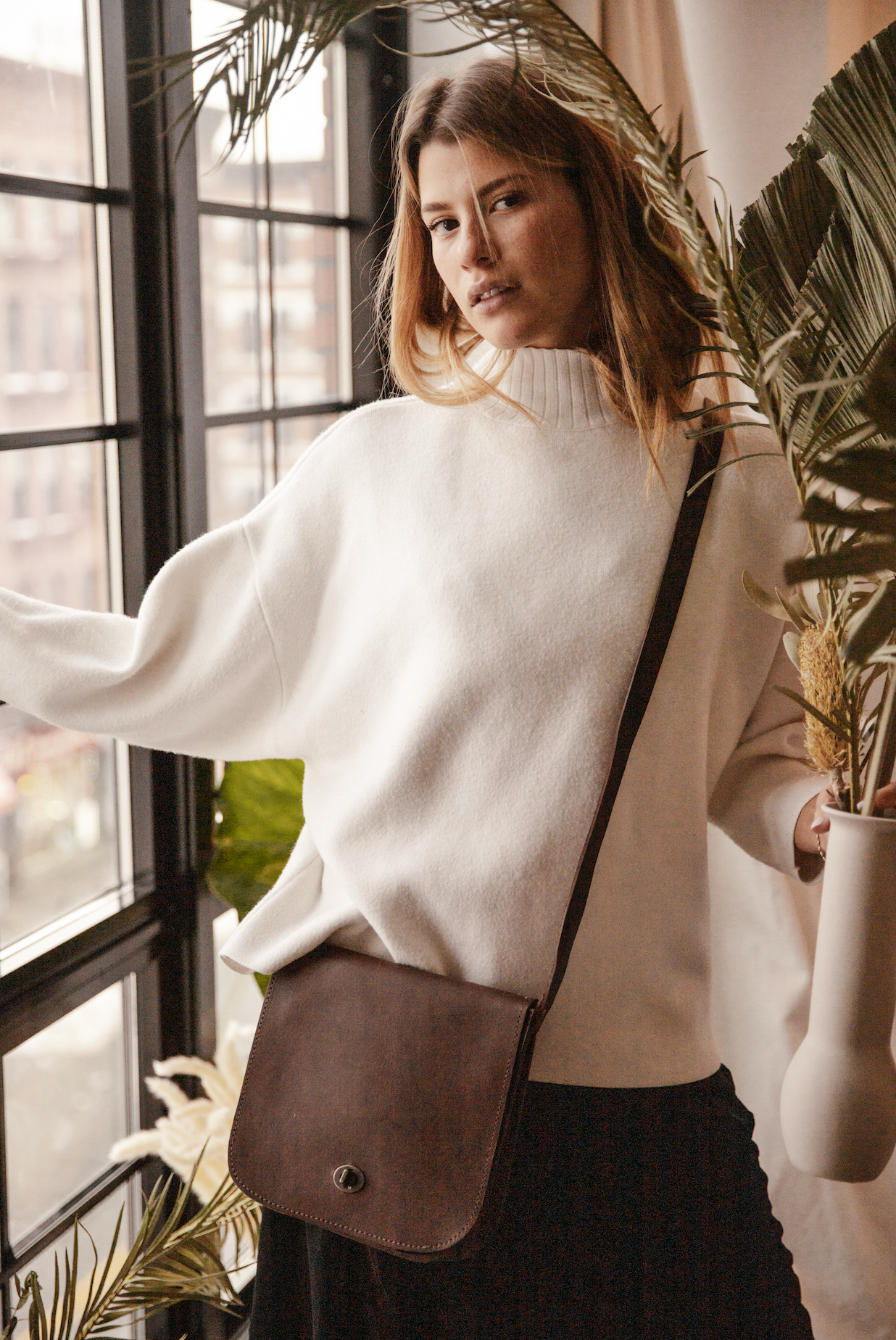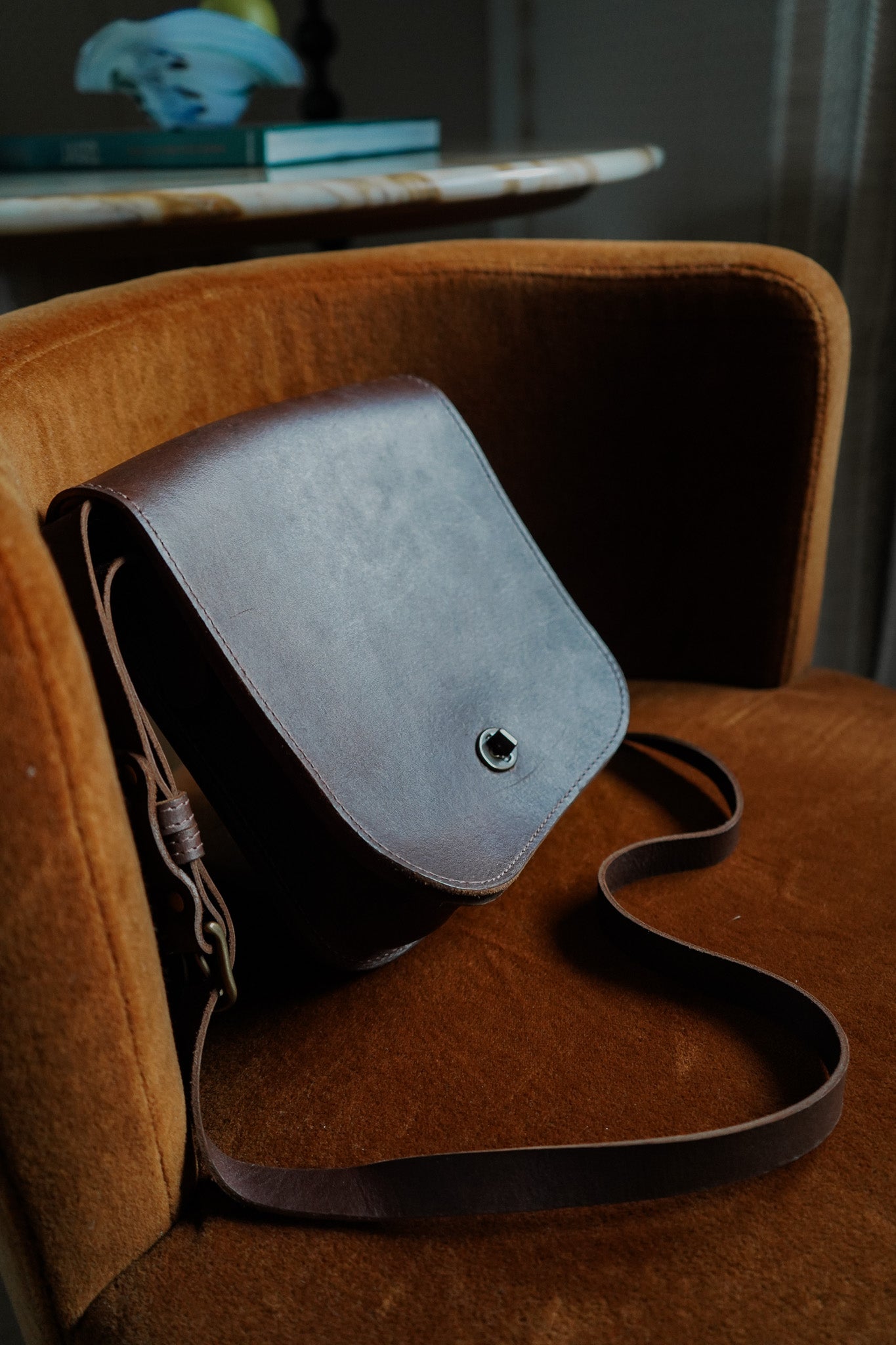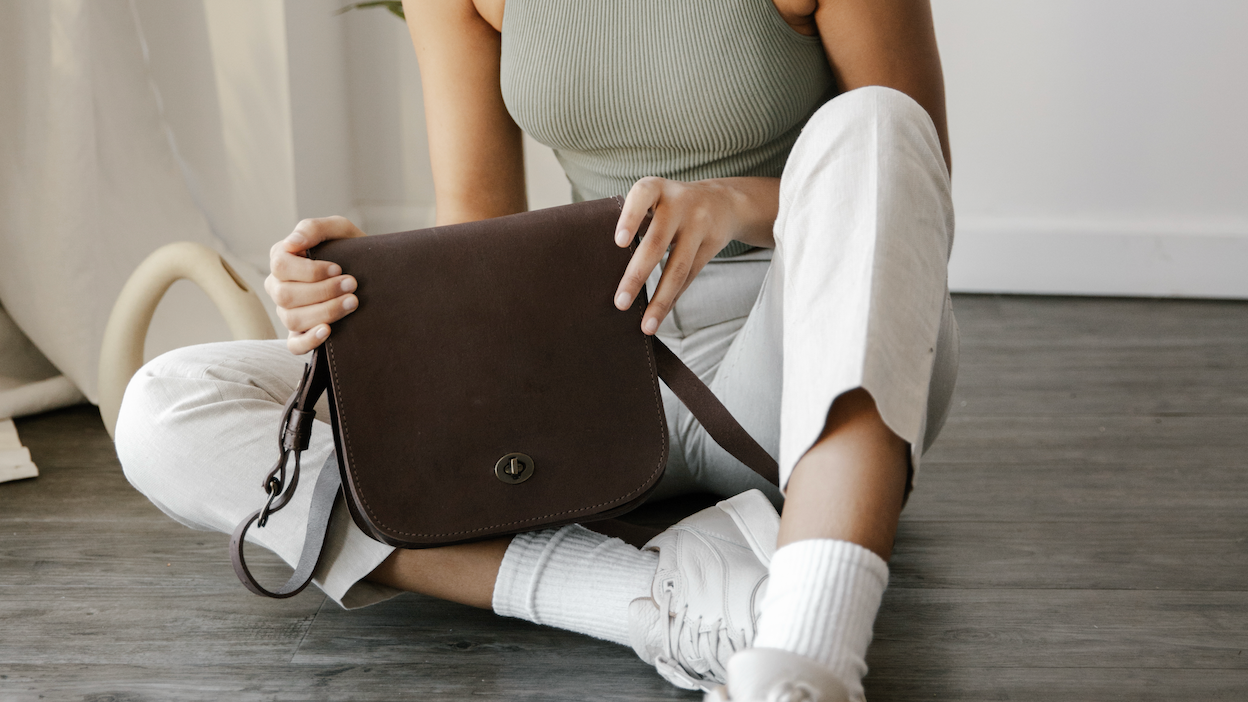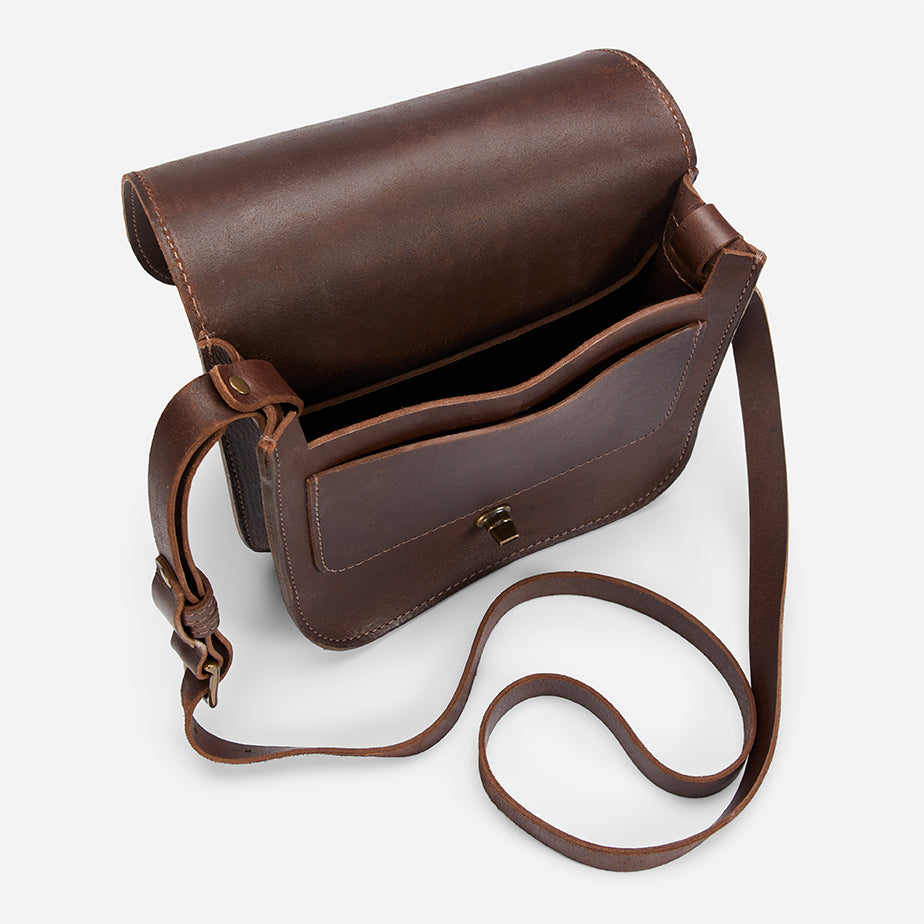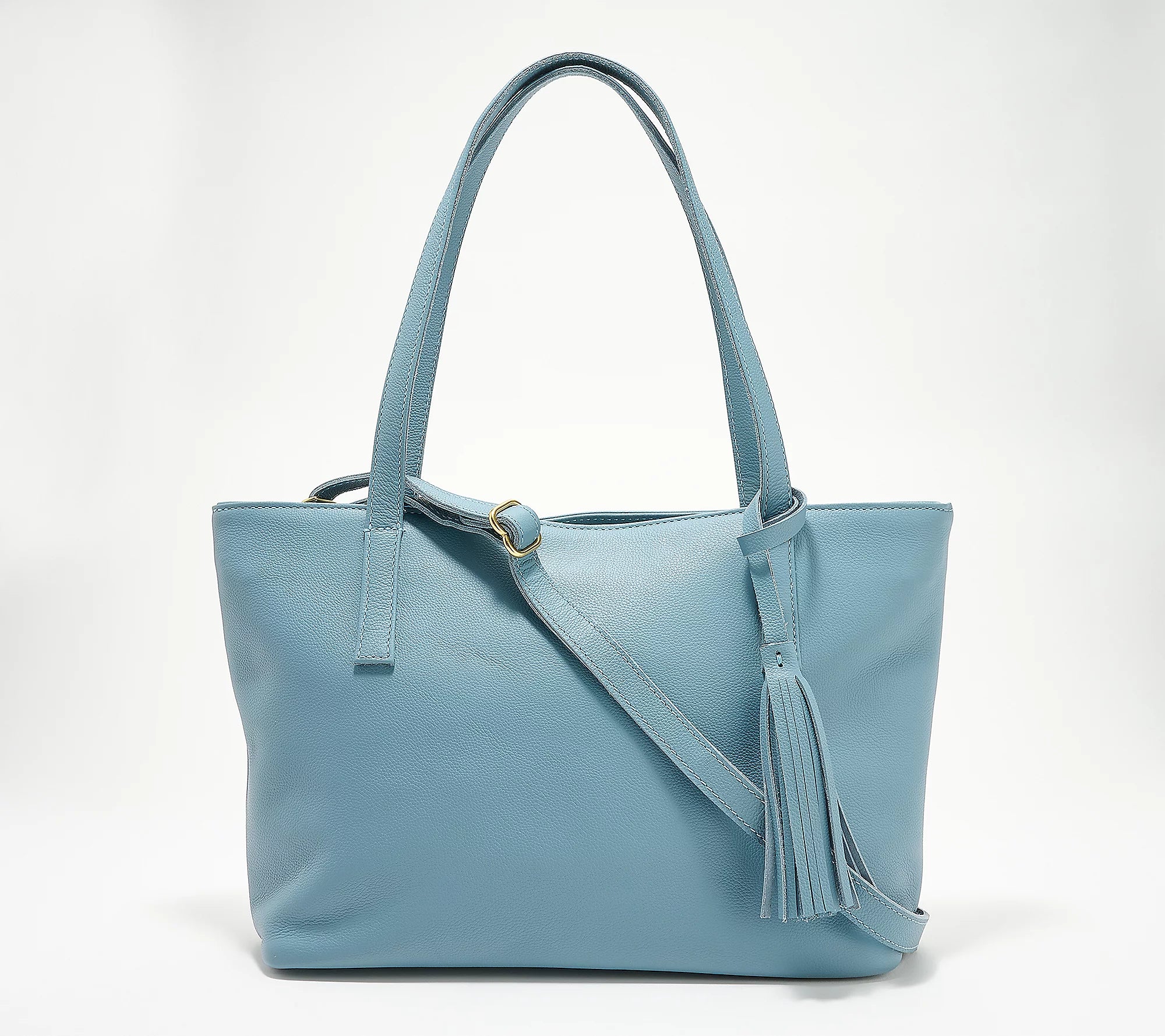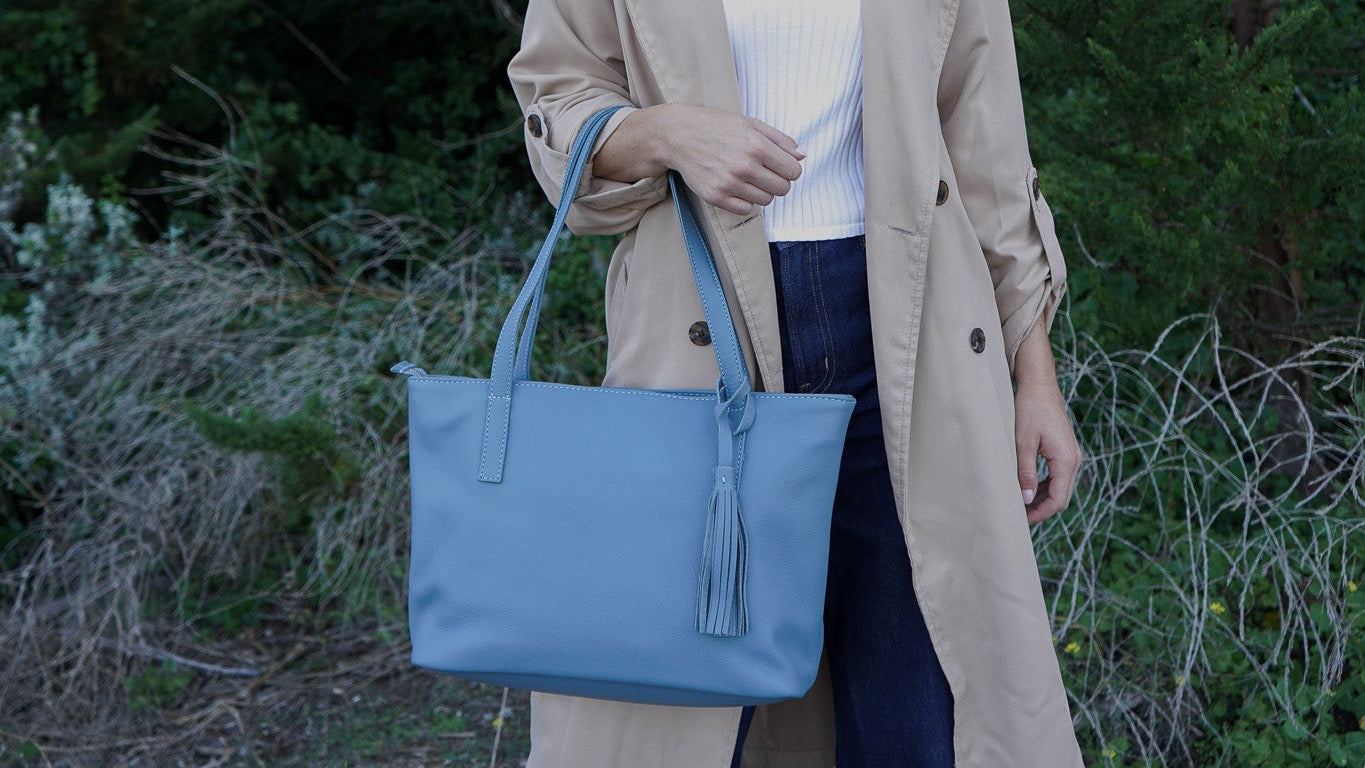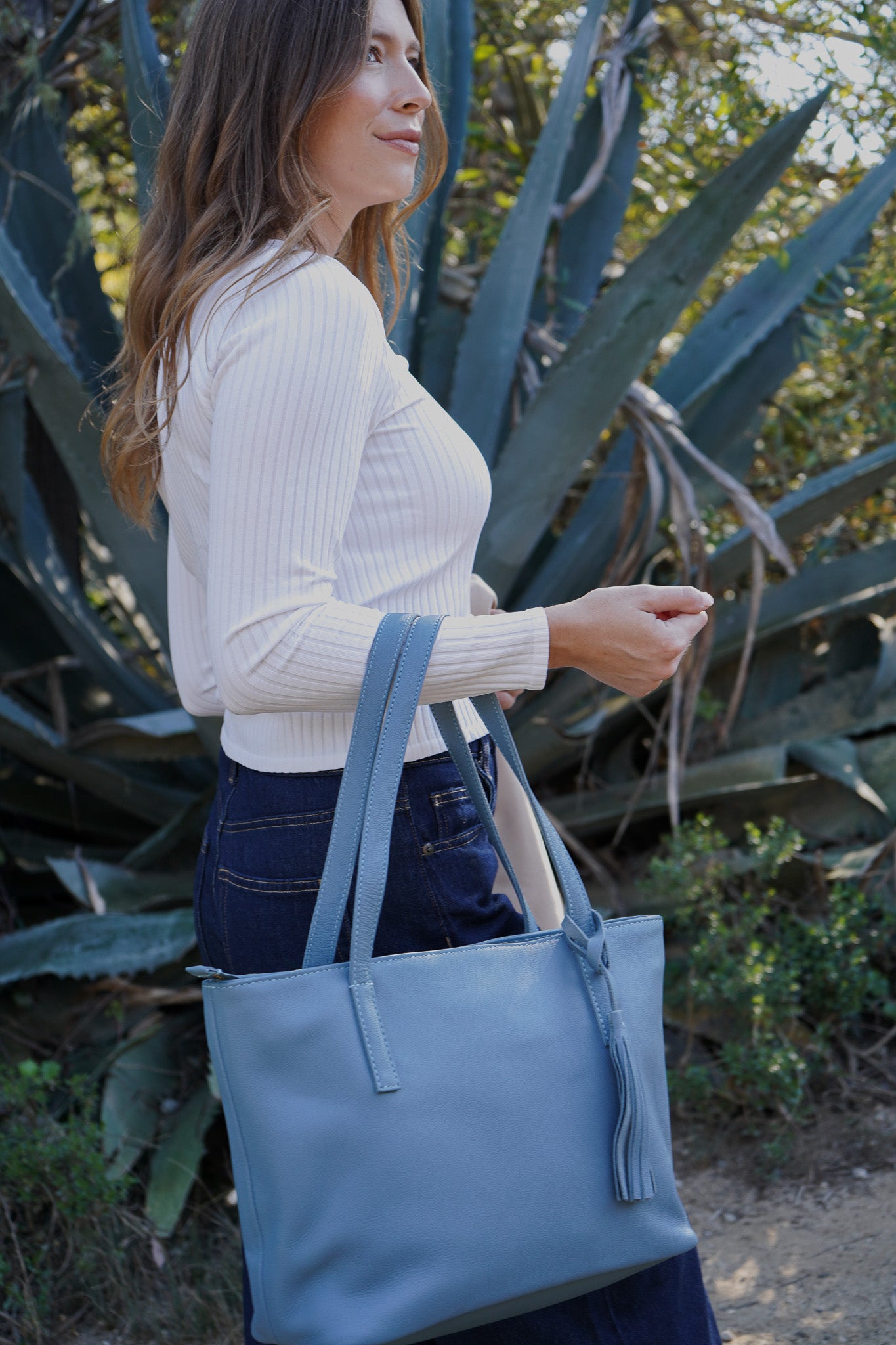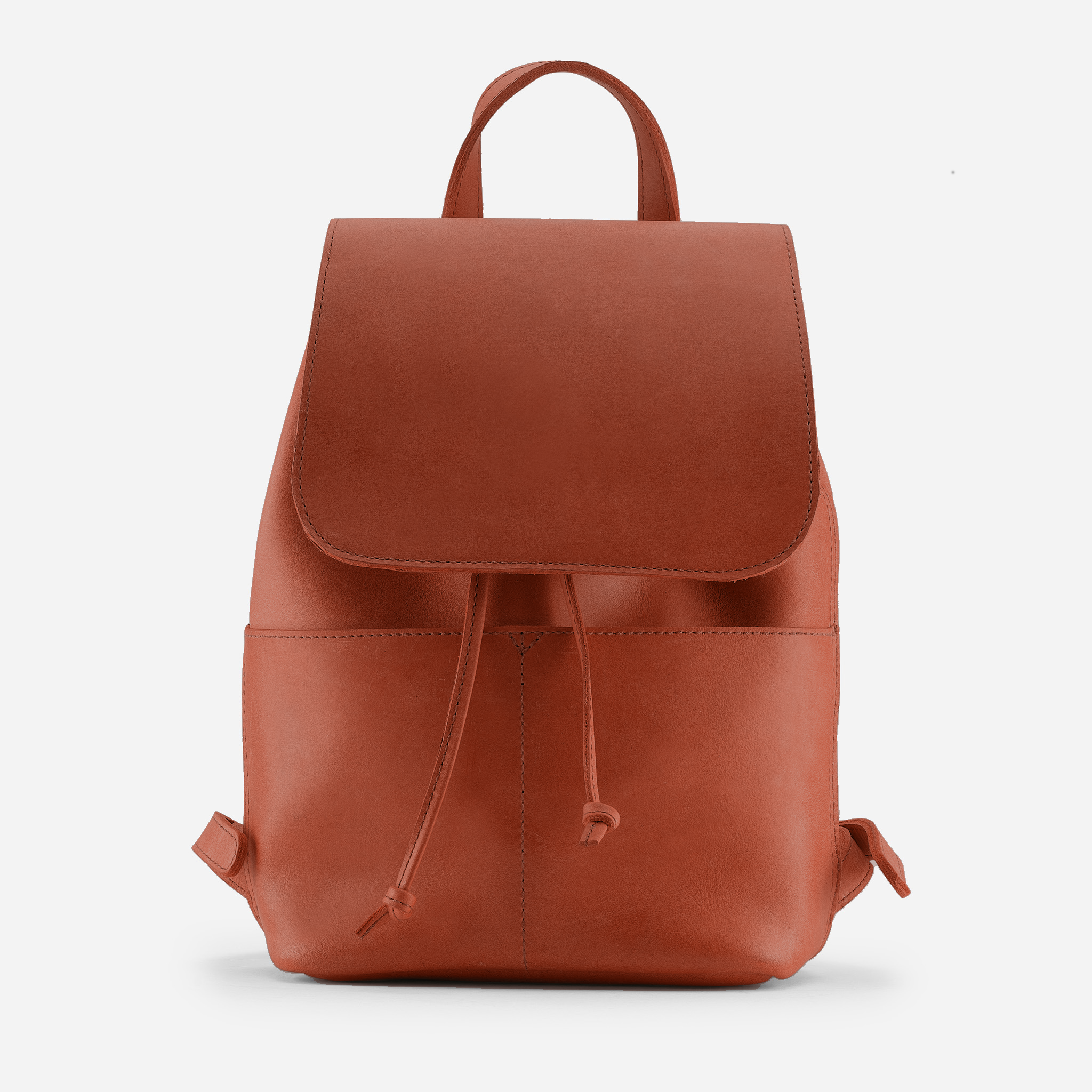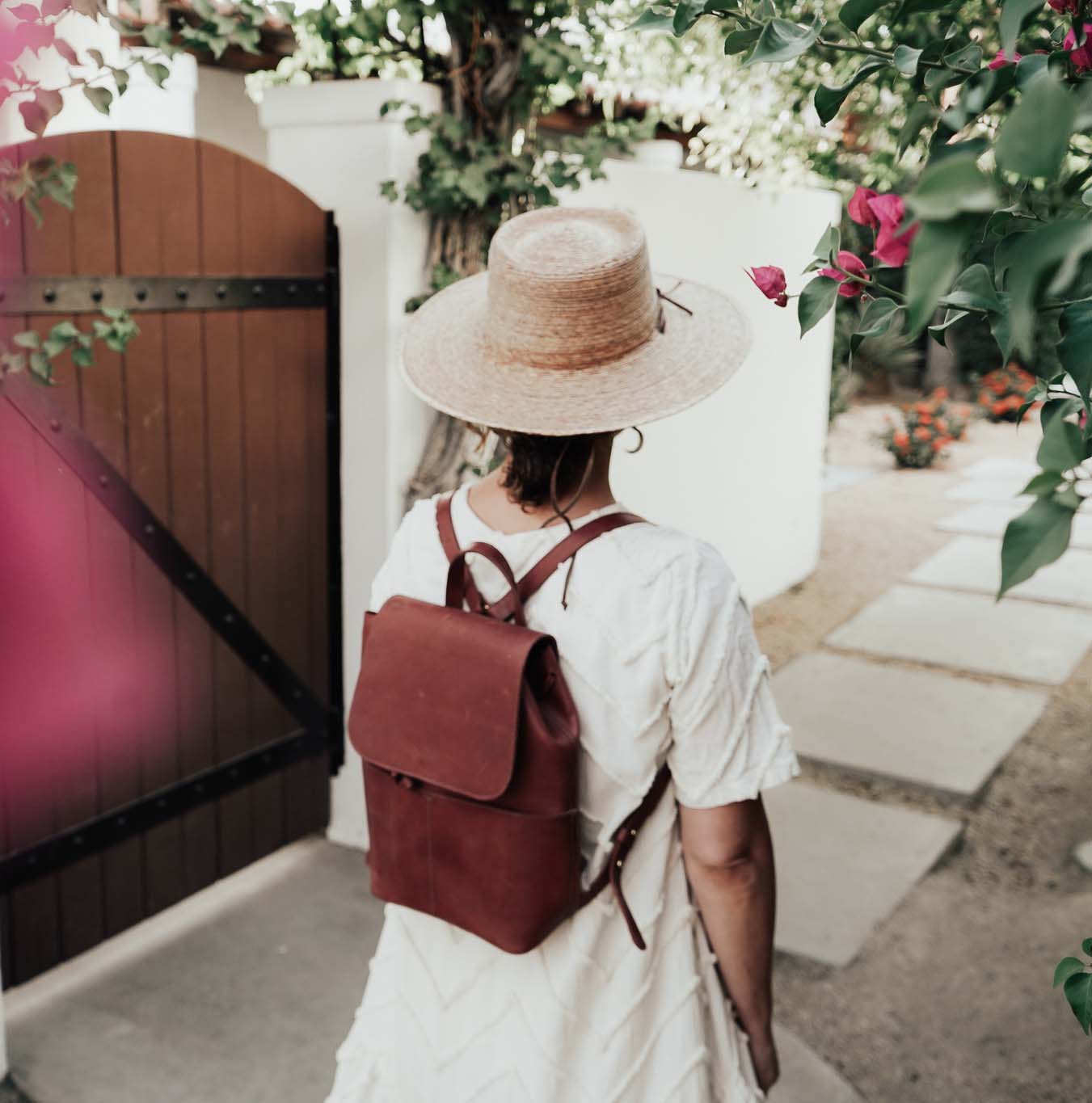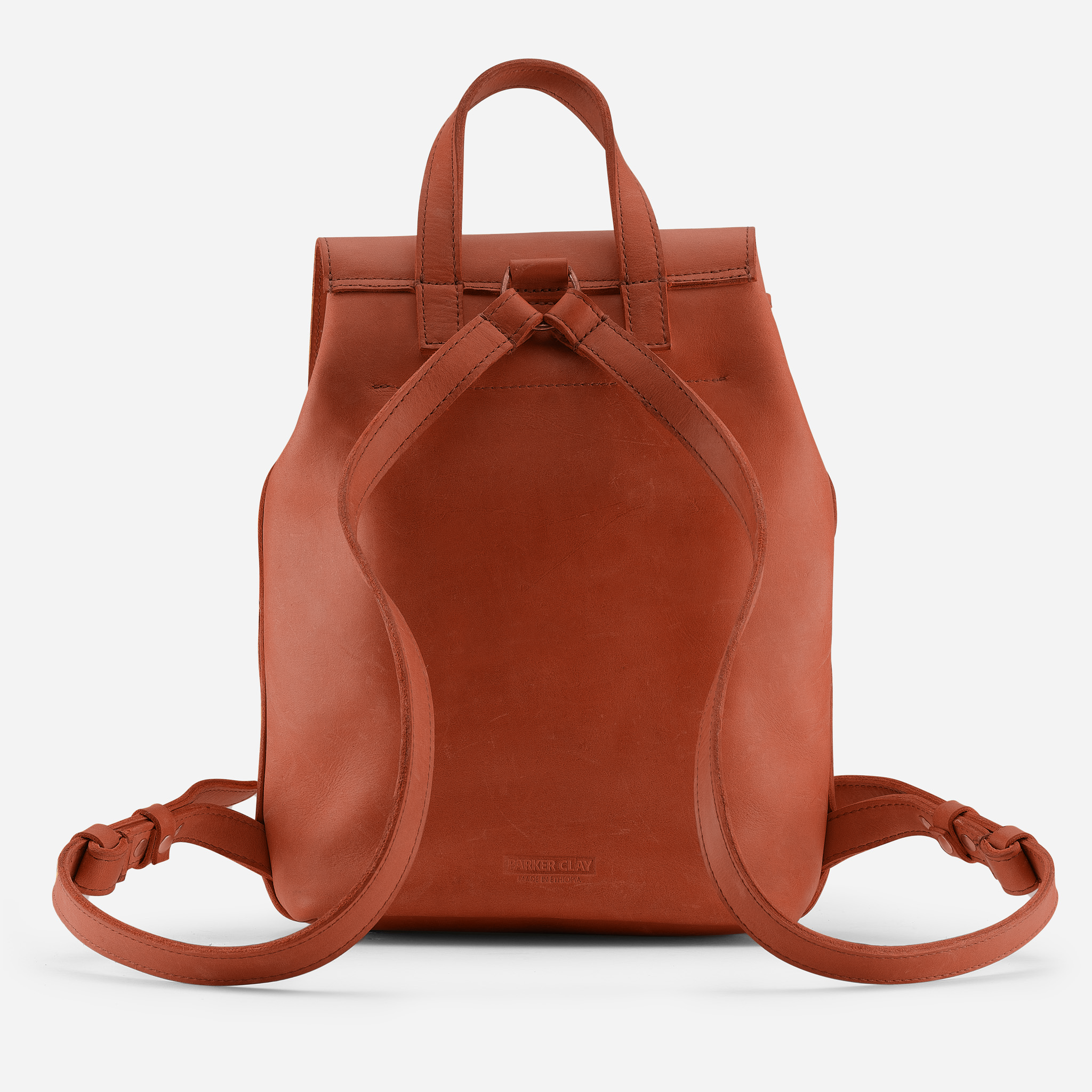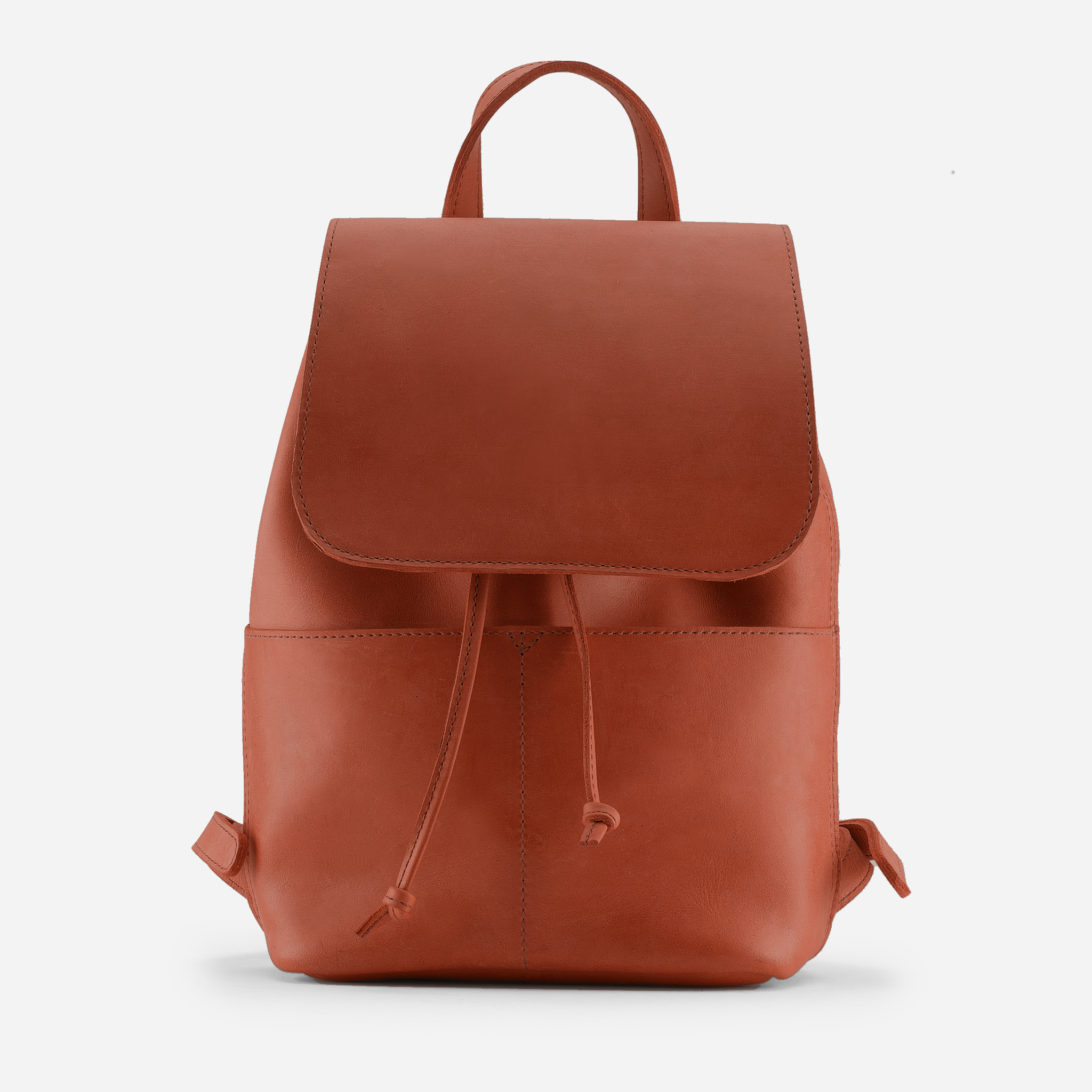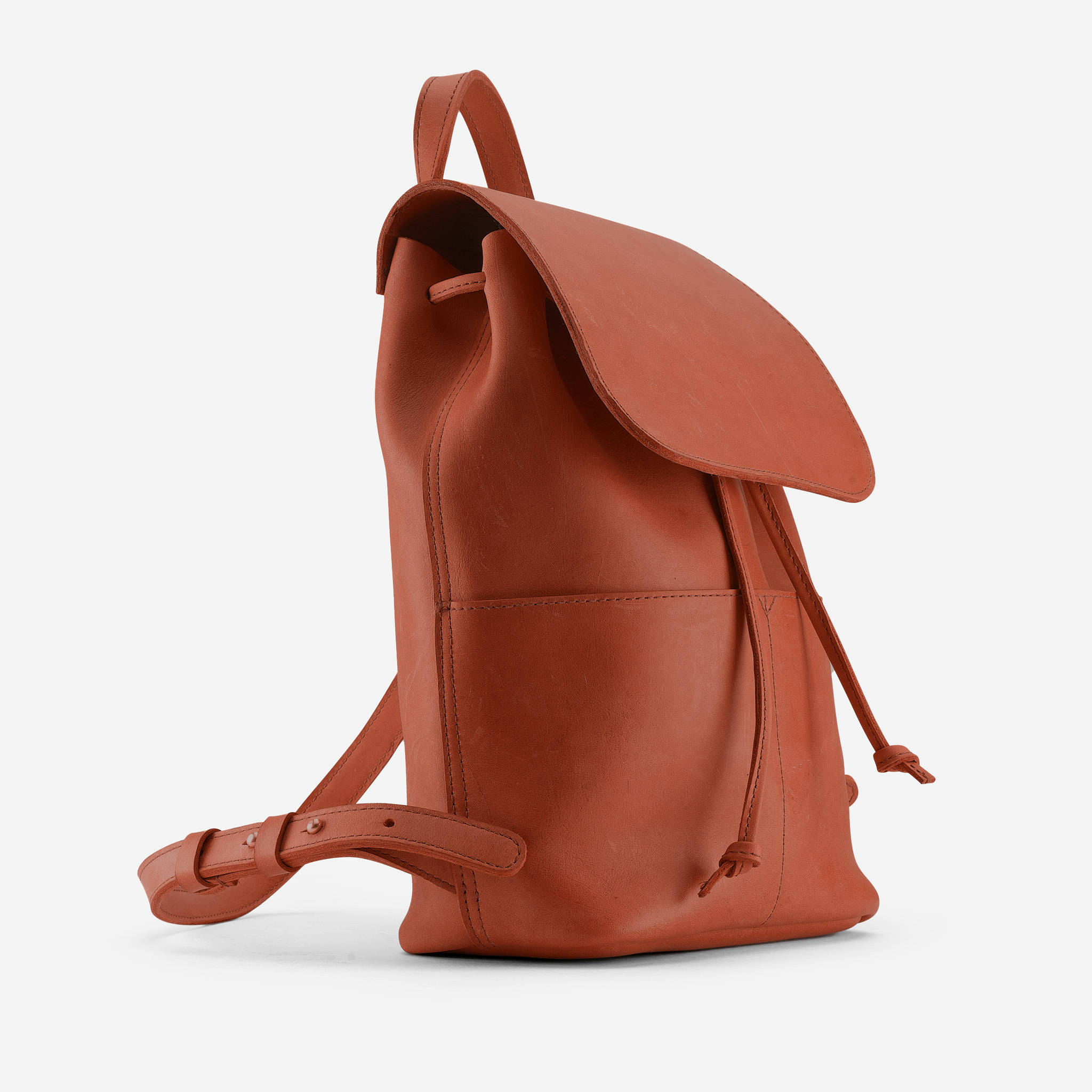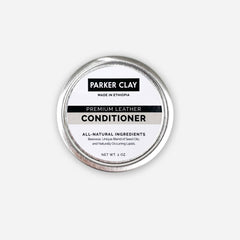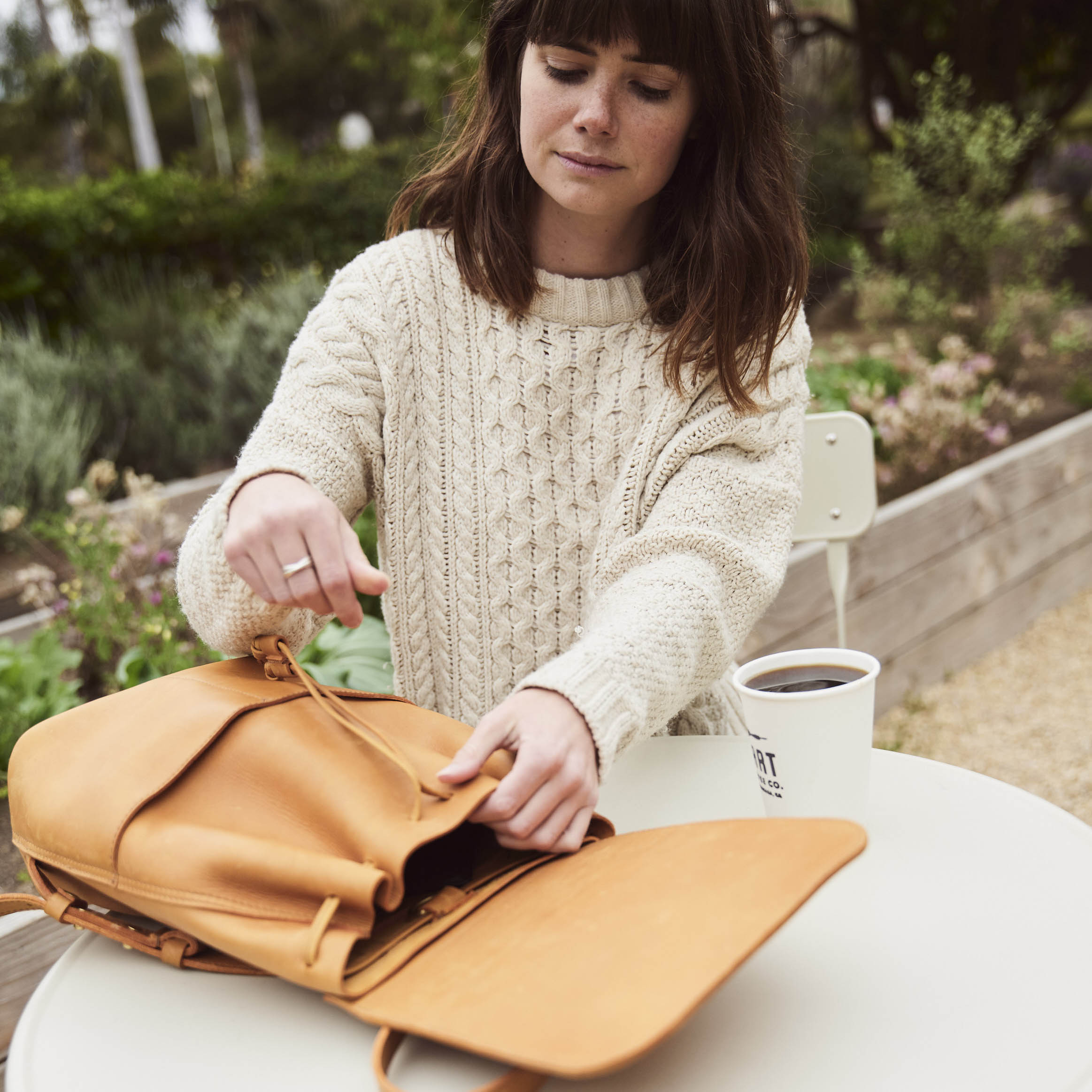Your wine just tipped over and spilled all over your leather bag. You snatch it up and look around frantically—do you rub it down with your napkin? Take it to the bathroom and scrub it with soap and water? Is the stain ever going to come out??
Don't panic! We're here with cleaning tips on the safest, most effective stain removal methods to get your leather bag looking new again. Leather stains are treatable, but you'll want to avoid causing further damage to your bag by using poor products or incorrect methods.
Keep reading our hacks before you get cleaning!
But first of all: DO make sure to remove stains immediately!
This tip sounds basic, but is super important: Treat a mark or stained area as soon as you see it. The longer a stain sets into a fabric or material, the harder it is to remove, regardless of the type of leather good.
The best cleaning method for leather handbags is to use an approved leather cleaner, but it's not the only one. Different stains and marks require different care. For example, certain handbags—especially high-quality or designer handbags—may be treated by using a cleaning solution, but a white leather bag may require more applications. Conversely, a water stain on a suede bag would benefit from a dry cloth.
Often, some of the most common stains, such as those from food or blood, can also be removed with chalk powder by crushing white chalk, sprinkling it onto the stain, and letting it sit overnight before dusting it off.
Below you'll find the best ways to treat particular stains, including some DIY options that use simple household items you probably already have on hand!
The Best Methods to Use When Cleaning Your Leather Bag
Ink Stains
Ink stains are tricky, but not impossible to remove. First, use a dry soft cloth, such as a paper towel, and dab at the stain to try and absorb any excess ink. Don't rub the stain as this can cause the ink to spread. Then, use a simple cleaning solution of soap and water to gently clean the spot. Afterward, you can apply another clean cloth or paper towel to the spot and soak up any excess ink, repeating the steps as needed until the spot is gone.
Another option is to use rubbing alcohol diluted with water, but you want to be sure to use a cotton swab to absorb the alcohol (and the ink). Go easy on the rubbing alcohol, and if you accidentally get the leather too wet, do not use a hairdryer or other method of artificial heat to dry it—use a clean towel to blot out as much of the alcohol as possible and let it dry naturally. If the stain is stubborn, you can also try nail polish remover to treat ink stains. Again, use a cotton swab to apply the nail polish remover, and then use soap and warm water to wipe the surface.
Dirt Stains
To remove dirt stains from quality leather you can either use a leather cleaning solution or make your own, by mixing warm water with dish soap (using a ratio of five parts water to one part soap). Once you have your solution, dampen a dry cloth and wipe down the area, being careful not to saturate the surface. If you're using a cleaning solution, you can spot test before applying to the stain or a large area, especially if you're cleaning a white leather product.
Water
These spots are sneaky; they may seem like nothing at first glance, but if left untreated, water spots may cause rings to develop on leather. To treat such stains, use a microfiber cloth in a natural or white color so no color transfers to the leather. Dampen the cloth with water and start at the center of the stain, rubbing outwards in a circular motion to treat the area. Let it dry and then repeat the process as needed until the stain is gone. You can also apply a leather conditioner to protect your products from future stains.
Wine
Treating wine stains are similar to treating water stains. The first thing to do is to blot the stain using a dry cloth or a microfiber cloth. In some cases, a leather cleaner may be applied. If that doesn't work, you can try applying lemon juice directly to the spot or mixing one part lemon juice with one part cream of tartar. This will create a paste that you can apply to the spot and leave to sit for 10 to 30 minutes depending on the severity of the stain before removing with a damp sponge.
Grease
To clean oil stains or grease stains, sprinkle baking soda onto the stain. Rub it in with a damp cloth and let sit for hours before wiping off to remove all powder residue. Another option is to use a dry cloth, such as a microfiber one, to first blot any grease from the spot. Then sprinkle cornstarch to the area and let it sit overnight, being sure to wipe away any remaining residue with a soft, dry cloth. Repeat as needed.
Leather Cleaning Products & Methods to Avoid
Harsh or Damaging Materials
When it comes to leather care, it's best to proceed with caution. If you're in a pinch and looking for a quick DIY cleaner, you need to be careful. We recommend that you never use a bleach-based cleaner, ammonia, or baby wipes to clean leather as these will damage your bag and strip down the natural look.
Too Much Liquid
It's also important to avoid using a soaking wet cloth when cleaning your bag as too much water will damage your leather. Start with a damp cloth and light pressure to avoid worsening the stain.
DIY Conditioners
While many of the above tips include some DIY solutions or pantry items that can help with cleaning or treating stains, in some cases, it's better to purchase products. We don't recommend making your own conditioner. Instead, it's better to invest in a leather conditioner that will ensure protection for your leather products, especially unfinished leather.
Are scuffs on my leather bag normal?
Scratches and other light markings are indeed part of the normal aging process of full grain leather. As you use your product they will begin to blend into the bag and create the beautiful aged leather look we love. We recommend using a leather conditioner every couple of months to help with the aging process and to keep your product in good condition.
Protect your leather purse
It's also good to take steps to proactively protect and care for your leather handbags, totes, wallets, and other leather goods. As with any quality product, genuine leather is an investment and should be treated with care.
In addition to periodically applying a quality leather conditioner, Be sure to store your products in a dark, dry place away from direct sunlight, which can cause fading. Be mindful of storing items that easily cause stains, such as makeup or pens, inside of your leather bags. Instead, remove items from the bag before storing, and consider keeping your items inside dust bags or other protective containers.
Finally, remember frequent use can cause wear and tear; avoid overuse by giving your bags a rest occasionally.
